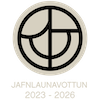Almenn verkefni 2023
Almenn verkefni 2023
Heiti verkefnis : | Nýtt nærsviðslíkan af stórskjálftahreyfingum út frá gerviskjálftaritum með aðferðum Bayesískrar tölfræði | |
Verkefnastjóri : | ||
Stutt lýsing á verkefninu: | ||
The South Iceland Seismic Zone (SISZ) and Reykjanes Peninsula Oblique Rift (RPOR) in Southwest Iceland together form one of the two major transform zones in the country that have the greatest capacity for the occurrence of destructive earthquakes. The SISZ is collocated with the South Iceland Lowland, a relatively flat and populated agricultural region with all critical infrastructures and lifelines of a modern society such as hydroelectric and geothermal power plants, dams, above-ground pipelines and electrical transmission lines. As a result, the earthquake hazard is the highest in this region and the investigation of earthquake strong-motion and its effects on the man-made environment is of particular interest and vital for seismic risk assessment and its mitigation. In this regard, performing probabilistic seismic hazard analysis (PSHA) is the most acceptable way to quantify earthquake hazard for the systematic mitigation of seismic risk. In Iceland, velocity pulses as the most damaging part of near-fault motion, have been observed in all strong-motion recordings close to the causative faults of the last three large earthquakes. These velocity pulses have the greatest effects on large structures such as bridges and tall/wide structures. However, conventional PSHA does not take into account such destructive effects. In this project, we will develop a new ground motion models (GMMs) that include a near-fault velocity pulse model using a Bayesian Hierarchical Model (BHM). The BHM describes the relative contribution of source, path, and site effects to the overall GMM uncertainty, through its event, event-site, and site-terms, respectively, along with their associated uncertainties. By augmenting new GMMs with the new velocity pulse model, the new near-fault GMM will provide an updated and state-of-the-art model that can capture the salient characteristic of the near-fault ground motions and will enable the first physics- based near-fault seismic hazard estimation for Iceland. | ||
Tilgangur og markmið: | ||
The long-term objective of this study is to mitigate the destructive impacts of future earthquakes in Iceland through the comprehensive implementation of the first physics-based approach to near-fault PSHA. The ground motions at sites located near active faults tend to be more complex than ground motions at farther sites and may be characterized by intense large amplitude and long-period velocity pulses along the fault normal direction. No model exists that can capture these motions, and very little data exists to calibrate such models with. As a result, conventional PSHA does not include key features of these near-fault velocity pulses. The purpose of this project is to use a new, big, and exclusive dataset of synthetic motions to calibrate a new near-fault ground motion model, with the specific aim of enabling near-fault PSHA, in order to answer the question of how much will exist seismic hazard maps for Southwest Iceland change as a result of the new model. For this purpose, the following distinct research milestones will be achieved in this project: 1) Processing, analysis, classification, and parametrization of the synthetic near-fault ground motion dataset of time histories; 2) Calibration of the near-fault velocity pulse model to the synthetic dataset of velocity pulses using the Bayesian Hierarchical Model;3) Testing the predictive capabilities of the new velocity pulse model in the near-fault region, augmenting existing GMMs with the new near-fault model, and quantifying their relative differences, which reveals the potential effects of this improvement on PSHA in the near- fault region. | ||

